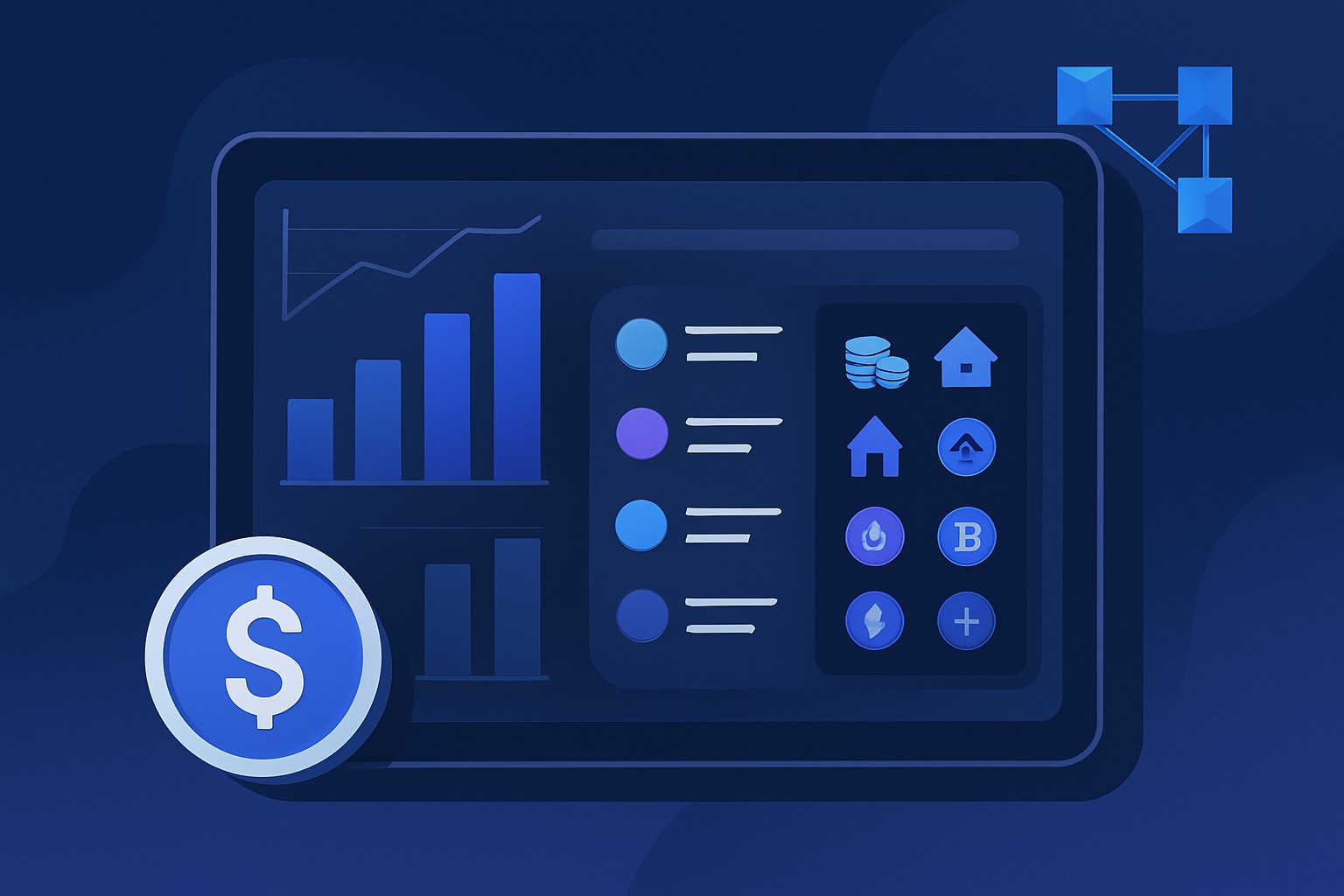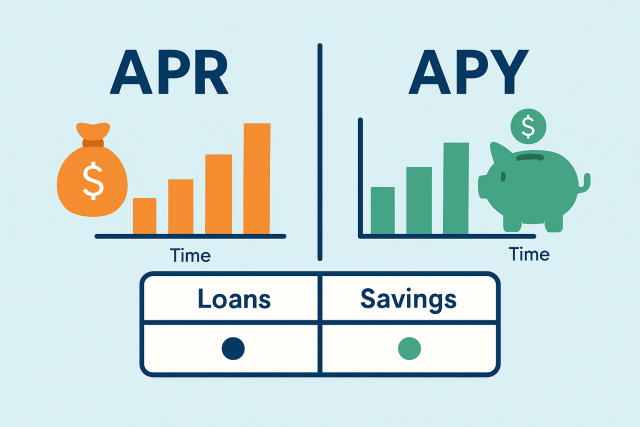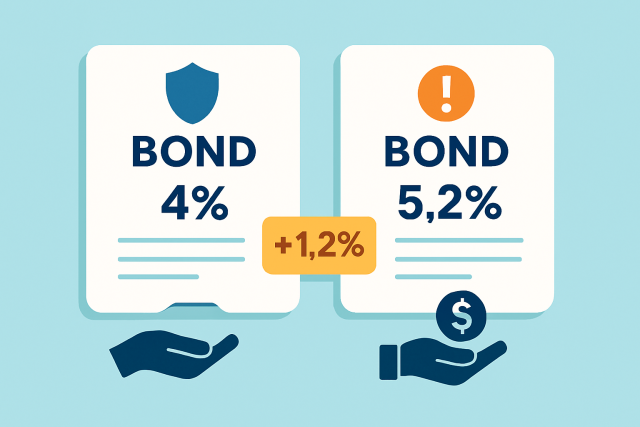DeFi Lending Platforms Compared by Rates and Features


This article breaks down how DeFi lending platforms tick and sizes up the main contenders to help you make wiser, more informed decisions.
- Dive into how DeFi lending platforms work and the perks they bring, like snagging higher yields and enjoying open access without jumping through hoops.
- Take a closer look at top dogs like Aave, Compound, and MakerDAO and weigh their rates, standout features, and security measures.
- Get a handle on how interest rates in DeFi lending ebb and flow because of supply and demand.
- Keep in mind the risks lurking behind the scenes like potential smart contract hiccups and the wild ride of collateral volatility before diving in.
DeFi lending platforms let users borrow and lend crypto assets through smart contracts.
Where Finance Meets a Touch of the Wild West in DeFi Lending Platforms
DeFi lending leans heavily on smart contracts. These self-executing programs live on blockchains and handle lending without the usual middlemen. People stash collateral in liquidity pools to back their loans. Interest rates often change on the fly based on supply and demand.
DeFi lending platforms bring clear perks to the table like transparency, open access and often better yields than traditional finance. Borrowers can snap up loans quickly and sidestep the usual credit checks that slow things down. Lenders earn interest just by putting their assets to work. There are some important risks worth keeping on your radar. Think potential smart contract bugs lurking in the code, the risk that collateral values might take a sudden nosedive triggering liquidations and the ever-present cloud of regulatory uncertainty hanging over these platforms.
Important Factors to Consider When Comparing DeFi Lending Platforms
When diving into the world of DeFi lending platforms, there’s a handful of key factors you’ll want to keep front and center. It is easy to get swept up by shiny promises, but a little know-how can save you from headaches down the road. From interest rates to security measures, each piece plays its part in the bigger picture. So, before you jump in headfirst, let’s break down what really matters and why it’s worth taking the time to look under the hood.
When diving into DeFi lending platforms, keep an eye on a handful of key factors like interest rates and the variety of supported assets. Also consider loan terms, collateral requirements, security measures and how user-friendly the platform feels.
- Interest rates for borrowing and lending give you a clear picture of the cost and the juicy returns you might snag.
- The types of collateral assets they accept and just how flexible they tend to be about it.
- Loan-to-value (LTV) ratios draw the line on how much dough you can actually borrow.
- Security measures the platform puts in place, including thorough audits and any insurance cushions that might save your skin.
- How the user interface is laid out and whether you’ll find it a breeze or a bit of a maze to navigate.
- Liquidity levels and trading volumes are the oil that keeps those transactions running smooth as silk.
- The fee structure and any penalties lurking around the corner for late payments or liquidations so you don’t get caught off guard.
- Governance models let the community have a real say, putting some democracy into the mix.
A Friendly Rundown of the Top DeFi Lending Platforms
This analysis dives into three standout DeFi lending platforms: Aave, Compound and MakerDAO. Each has carved out a solid spot in the market and offers a varied mix of assets with some eye-catching features like flash loans and decentralized governance.
| Platform | Borrowing APY | Lending APY | Collateral Types | Max LTV | Fees | Supported Blockchains |
|---|---|---|---|---|---|---|
| Aave | 2.5% - 12% | 1% - 8% | ETH, DAI, USDC, BTC, LINK, and a few more surprises | Up to 75% | Variable fees plus a dash of flash loan fees | Ethereum, Polygon, Avalanche |
| Compound | 2% - 10% | 1% - 6% | ETH, DAI, USDC, WBTC, BAT | Up to 70% | Origination and liquidation fees that keep things ticking | Ethereum |
| MakerDAO | 3% - 8% | N/A (debt system) | ETH, WBTC, LINK, BAT | Up to 66.6% | Stability fees and liquidation fees—nothing too sneaky, promise | Ethereum |
Platform 1 Key Features and What You Need to Know
Aave has earned a solid reputation for supporting a wide variety of assets and introducing some neat innovations. Borrowing rates usually sit between 2.5% and 12%. Lenders can typically pocket returns ranging from 1% to 8%, though that swings with the market's mood. One standout feature is flash loans—these lightning-fast no-collateral loans that almost feel like magic.
Platform 2 Key Features and Overview A Closer Look
Compound offers a user-friendly protocol with interest rates that usually hover between 2% and 10% for borrowers and 1% to 6% for lenders—nothing too wild but enough to keep things interesting. It primarily supports key Ethereum-based assets like ETH, DAI and WBTC, making it a go-to for many in the space. The platform prides itself on being straightforward and lightning-fast. It does come with origination and liquidation fees as you would expect. Its automated interest rate system cleverly adjusts rates on the fly based on supply and demand.
Platform 3 Key Features and What Makes It Tick
MakerDAO runs on a decentralized stablecoin system where individuals mint DAI by locking up collateral like ETH or WBTC. Borrowing costs are kept in check by stability fees that typically hover between 3% and 8%. You can borrow up to about two-thirds of your collateral’s value. What sets it apart from typical lenders are its robust security measures, community-driven governance that listens, and straightforward liquidation procedures.
Interest Rates Explained and What You Can Expect (Even if It Feels Like a Bit of a Puzzle)
Interest rates on DeFi platforms tend to ebb and flow with the tides of supply and demand. While a handful of protocols offer fixed rates that stay put, the majority rely on dynamic rates that can shift on a dime. Borrowers should brace themselves for rate changes that reflect the current state of market liquidity.
- Variable rates fluctuate in real time depending on just how much of an asset is up for grabs and how eager people are to borrow or lend it.
- Some platforms offer fixed-rate loans for those who like their payments steady and predictable, no surprises there.
- When supply gets tight or on the flip side plentiful, it usually makes borrowing and lending yields take a noticeable turn.
- The size of the liquidity pool and how much of it’s actually in play really put the squeeze on interest rate movements.
- Meanwhile, the quality and volatility of collateral quietly but firmly shape the risk premiums baked into those rates.
Taking a Closer Look at Security and Risks in DeFi Lending Platforms
DeFi lending opens the door to a new set of security headaches like sneaky vulnerabilities in smart contracts that crafty attackers could exploit. There is also the looming risk of liquidation when prices fall sharply. Platforms might also fail if the collateral does not cover loans.
Each platform has its own unique way of juggling risks. It leans heavily on thorough third-party smart contract audits and employs a safety module staking system designed to shield lenders, kind of like a safety net you hope you never have to use. Compound uses time-locked governance and has passed through several security audits, showing it’s serious about locking things down. Decentralized governance lets the community have a real say by voting on protocol upgrades and risk settings, all while keeping insured collateral vaults intact.
"Smart contract audits, coupled with active community governance, usually form the bedrock of trust in DeFi lending. From my experience, users would do well to pick platforms that don’t just talk the talk but lay out their security practices in plain sight—this transparency goes a long way in trimming down the risks involved." — Blockchain Security Expert
User Experience and Accessibility Making Things Work for Everyone
A smooth user experience is absolutely key in decentralized lending. Platforms vary in how intuitive their interfaces feel and how easy it is to jump right in. They also differ in the variety of wallets they support and whether they play nice across different blockchains.
- Platforms generally deliver a smooth experience across both mobile gadgets and desktop browsers so you are not left hanging no matter how you log in.
- They play nicely with popular wallets such as MetaMask, WalletConnect and Coinbase Wallet which makes getting started a breeze.
- Onboarding ranges from a quick hop-in to a detailed process involving collateral deposits. These need crystal-clear guidance to avoid head-scratching moments.
- Customer support usually steps up with live chat, thorough FAQs that answer your questions and community forums where you can bounce ideas off fellow users.
Finding the Platform That Really Clicks with You
Choosing among DeFi lending platforms often boils down to what really floats your boat—whether that’s chasing high returns, snagging affordable borrowing rates, having access to various assets, counting on rock-solid security or simply wanting something easy to use. Each platform tends to shine in its own corner so it is wise to line up your goals with what each one offers.
Take a moment to really think about how much risk you’re comfortable with and just how vital security is when you’re lending or borrowing—it can make all the difference.
Pin down which crypto assets you’re planning to deposit or borrow, and double-check that the platform has got your back by supporting them.
Decide whether you’re a fixed-rate fan or if you don’t mind riding the waves of changing interest rates that follow the market’s mood swings.
Keep your liquidity needs in focus—whether you need quick access to funds or you’re aiming to borrow a hefty sum, it’s worth planning ahead.
Give each platform’s security measures and governance a thorough once-over to be sure your precious assets are locked up tight.
Frequently Asked Questions
How do interest rates on DeFi lending platforms compare to traditional banks?
DeFi lending platforms often dish out higher yields for lenders, usually landing between 1% and 8%, which tends to beat what traditional banks offer. That said, these rates are like the weather—constantly changing with market demand. Borrowing rates can swing from about 2.5% up to 12% and might carry quirks like shifts in collateral value that you need to watch. Traditional banks generally stick to fixed rates and offer the comfort of FDIC insurance whereas DeFi is all about decentralization and transparency which adds a different flavor to the mix.
What happens if my collateral value drops suddenly on a DeFi platform?
If your collateral dips below the required Loan-to-Value ratio the platform might swoop in and liquidate it automatically to cover the loan. It’s a bit like a safety net to avoid insolvency though it can throw a wrench in your plans with some partial losses. Thankfully platforms like Aave and MakerDAO come equipped with nifty safety features—think staking pools or insured vaults—that help cushion these risks and give users more peace of mind.
Are flash loans on platforms like Aave safe to use?
Flash loans don’t require collateral but must be paid back within the same transaction block which lowers the risk of default. That said they’re not plug-and-play—using them demands technical know-how and can be risky if bugs lurk in the smart contracts. I’ve found it’s best practice to dig into audit reports and run transactions in a test environment before diving in headfirst.
Can I borrow stablecoins like DAI without collateral on DeFi platforms?
Nope borrowing in DeFi usually means putting up more collateral than you borrow—typically around 150%—to keep things safe. For instance MakerDAO insists on collateral to mint DAI. Unsecured loans are rare here and mostly found in flash loans or centralized outfits that run credit checks which isn’t exactly the DeFi vibe.
How do I choose between Aave, Compound, and MakerDAO?
If you want a buffet of assets and flash loans, Aave might be your go-to. Compound stands out for being user-friendly and supporting a solid lineup of Ethereum tokens while MakerDAO is a solid pick if stablecoin minting and decentralized governance are your cup of tea. It boils down to what floats your boat: chasing higher yields with Aave, steady rates through Compound, or borrowing DAI via MakerDAO. Just don’t forget to check security audits and liquidity before putting your money on the line.
What security measures should I verify before using a DeFi lending platform?
Look for third-party audits from big-name firms like CertiK or OpenZeppelin, active community governance that keeps things transparent, and insurance options like Aave’s Safety Module. Steer clear of platforms that haven’t passed audits or suffer from low liquidity as that’s usually a red flag. Bookmarking official docs and staying in the loop about protocol updates can save you from nasty surprises down the road.






